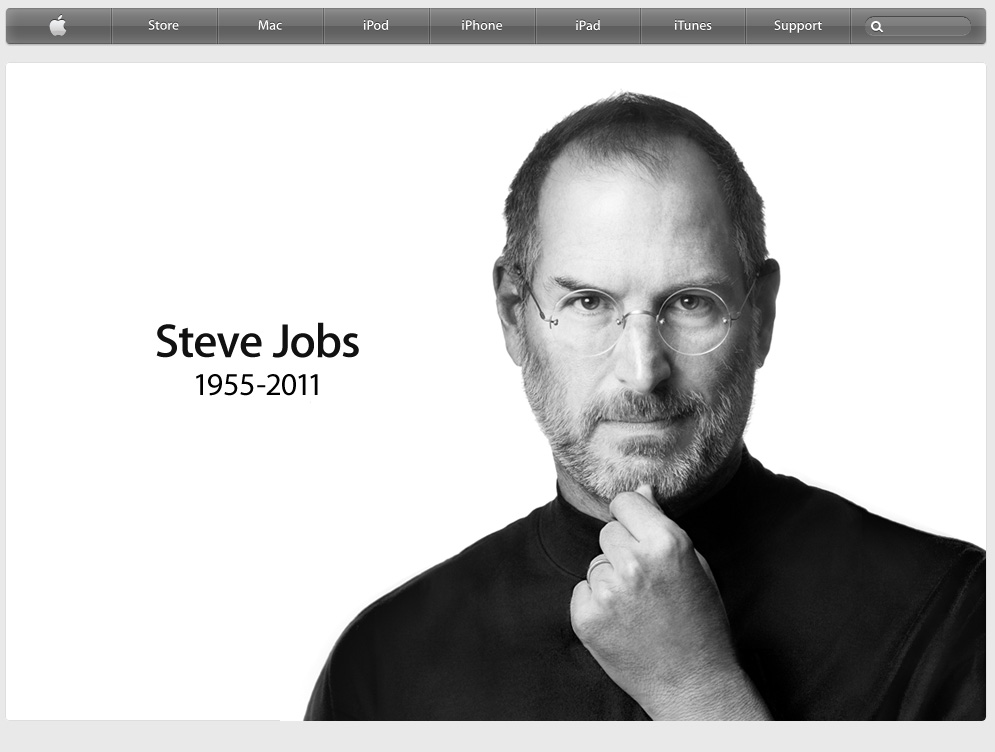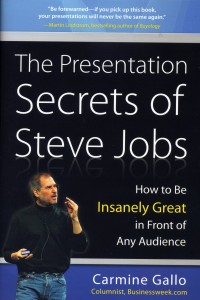We probably join the masses today who will pay tribute to Steve Jobs, but in truth, we have had this blog post scheduled for a number of weeks now. The timing is unbelievable that we would publish on this, the day after Steve Jobs, the iconic CEO, has passed away. The Apple website home page speaks volumes with very few words about the last impression he will leave.

At SIGMA, we recently finished reading The Presentation Secrets of Steve Jobs, by Carmine Gallo, for discussion in our employee book club. How many of us over-complicate presentations? This book provides a narrative list with real life examples to guide people in making presentations better. The simple list goes something like this (SIGMA paraphrase):
- Scribble it out first. Map out your ideas and presentation thoughts with pen and paper or even on a white board first – beginning to end.
- Simplify complicated ideas. Work hard at not being verbose. Take long drawn out ideas and shorten into ‘tweet-like’ language that will drive a point home in one sentence.
- Welcome the villain. Your audience needs to understand the problem before the solution is presented. This invites your audience to embrace the hero (or product/solution) when introduced into the story.
- Personalize the Benefits. Tell your audience how the product will solve their problems or make their lives better. The benefits need to be about them.
- Stick to the 3 most important points. What three things should your audience remember no matter what? Focus on those 3 things – keep it simple. Your audience won’t remember any more than that.
- How will your “thing” change the world? Steve Jobs did not sell computers and devices, he sold innovation that has changed the world. How will your “thing” change the world?
- Be visual. Less words and bullet points. More images. Period.
- Put numbers in context. Many presentations need numbers, but they need to tell a clear story. Make the numbers and data relevant and easy to understand.
Use simple language. That is not to say your audience is simple-minded, but avoid buzzwords and language than can blur the focus of the presentation. Simplicity in language is key.
- Practice makes perfect. We may not all have the kind of time Steve Jobs had when prepping for many of his presentations, however practice is a critical element to a successful presentation.
None of these things are rocket science, and many of us probably work hard at applying half of these principles to our presentations. We challenge you to apply all of them and then ask to be critiqued during a practice sessions, or even the live presentation. You might be pleasantly surprised to realize how simple and effective these 10 rules can be.
Steve Jobs will forever be an icon. How did he change lives at SIGMA? Not with an iPad, though that may have helped. But rather through what we have learned from him practically, that can be applied to how we deliver better presentations.
 Use simple language. That is not to say your audience is simple-minded, but avoid buzzwords and language than can blur the focus of the presentation. Simplicity in language is key.
Use simple language. That is not to say your audience is simple-minded, but avoid buzzwords and language than can blur the focus of the presentation. Simplicity in language is key.